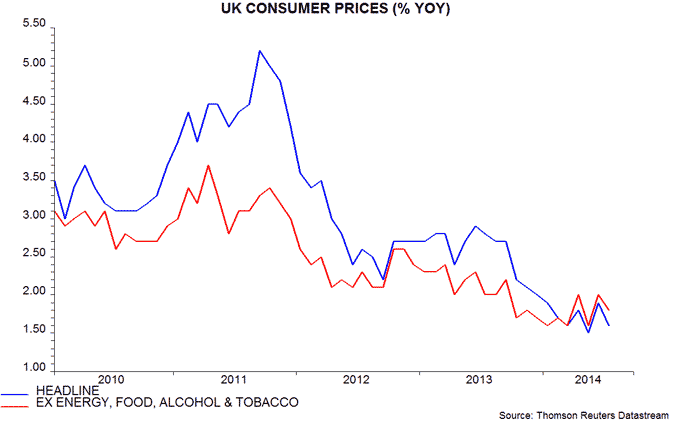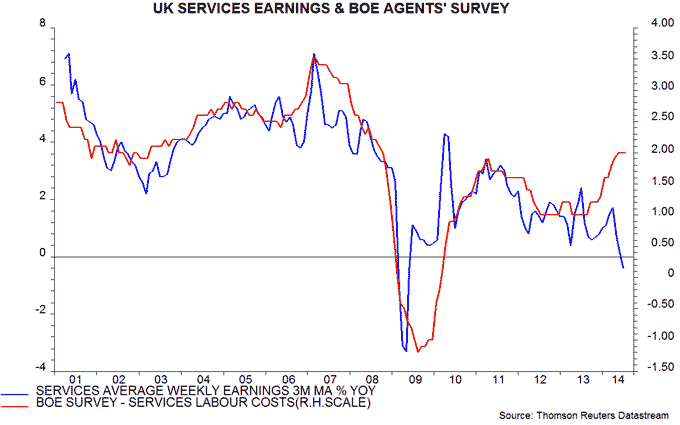The “monetarist” rule-of-thumb that money supply changes lead domestic prices by roughly two years suggested that Eurozone and UK “core” inflation would bottom around end-2013 and revive during 2014. Recent news is consistent with this forecast, although the rise to date has been small.
Eurozone core inflation, as measured by the annual rate of change of consumer prices excluding energy, food, alcohol and tobacco, fell from 1.5% at end-2012 to 0.7% at end-2013. It revisited this level in March and June but edged up to 0.9% in August, according to today’s “flash” estimate – see first chart.
UK core inflation declined from 2.4% at end-2012 to a low of 1.6% in January 2014 but was 1.8% as of July – second chart.
The change of trend around end-2013 fits with a turnaround in monetary growth in 2011-12. Annual narrow money expansion bottomed in July 2011 in the Eurozone and June 2011 in the UK but a significant recovery was delayed until 2012.
Core inflation has been temporarily restrained by exchange rate strength. The euro effective rate rose by 6.5% during 2013, though has fallen by 3.4% year-to-date. The sterling effective rate climbed 1.7% last year and is up a further 3.0% so far in 2014.
UK core inflation is expected here to rise significantly by mid-2015, reflecting a strong increase in money growth through mid-2013 and subsequent economic buoyancy. Services inflation should lead the upward move: the net percentage of consumer services firms planning to raise prices is the highest since 2011, while pay pressures are increasing – third and fourth charts.



